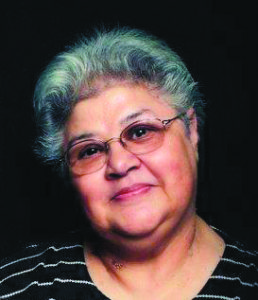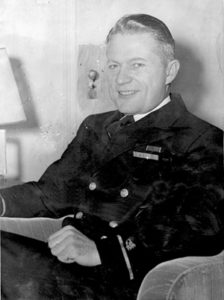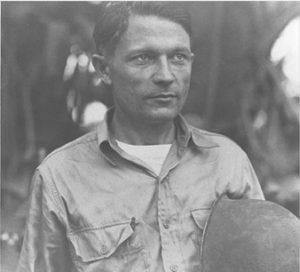

On July 10, 1944, equipped with only a mirror and hand-made semaphore, U.S. Navy Radioman First Class George Ray Tweed signaled: “I have information” to the U.S. fleet as they approached Guam for the Second Battle of Guam.
From his vantage point, Tweed conveyed information about Japanese defenses that he had gathered during his seclusion overlooking the west coast of the island. He was quickly rescued by a whaleboat from the USS McCall.
At the age of 20, Tweed enlisted in the United States Navy in 1922 and attended the basic training at Naval Station Great Lakes. He also attended the Radioman School and served in the various Navy radio units until 1940, when he was transferred to the Naval Base Guam.
Radioman First Class, Tweed was serving in the Navy Communication Office when the Japanese invaded the island on December 8, 1941, in the First Battle of Guam. Tweed had arrived on Guam in August 1939.
He and five other navy men from the USS Penguin slipped into the Guam jungle rather than become prisoners of war.
The group believed that American forces would rescue Guam from the Japanese within a matter of six weeks at the most, and figured they could hold out in hiding for that long. Little did they know that it would be more than two and a half years before American forces returned.

Japanese eventually captured and executed all of them except Tweed. Initially, the Japanese had offered a reward of 50 yen for information leading to the capture of the Americans. The Japanese also tortured and executed local Chamorro natives whom they suspected of helping the missing Americans. Still, the locals did not want Tweed to surrender: “The people of Guam feel that as long as you hold out the Americans will come back,” said Carmen Artero Kasperbauer, daughter of Antonio and Josefa Artero
In spite of the fact that the bounty reward had been raised to 1,000 yen, dead or alive, Tweed had managed to hide in the middle of the island, aided by many locals in 11 different locations, until October 1942.
Then, Tweed was sheltered on Antonio Artero’s ranch on the northwest portion of the island. In total, Tweed managed to elude the Japanese for two years and seven months, until just before the start of the battle. During that time, he studied algebra and made shoes for the family watching over him.
While Tweed was hiding in a cave in Yona, he was able to get a Silvertone radio working by March 1942, allowing him and the locals to receive news broadcast from KGEI, San Francisco. When that battery ceased operating, he used a Zenith Electronics radio to pick up also the USAFFE, The Voice of Freedom, and broadcasts from Corregidor Island. Based on the radio broadcasts, Tweed published an underground newspaper, the Guam Eagle, for four months using a typewriter and carbon paper.
When Tweed first heard about the torture of people suspected by the Japanese of knowing the whereabouts of the Americans, early on in the war, he considered turning himself in to save further punishment of the Chamorros. But he was advised against it by one of his close friends, a highly respected educator Agueda I. Johnston, who said that Tweed was a symbol of hope to the Chamorros.
“Our parents did what they did because of their love and belief in God and their love for America,” Kasperbauer said. “The Japanese tortured and killed our people because of our love and belief in America and protecting an innocent person against an enemy,”
Tweed had promised the native rancher, Antonio Artero, a new car if he evaded capture and returned to the United States. Tweed confirmed in a video interview in 1984 for a Guam Cable TV program that with the help of General Motors, in a promotional campaign to highlight the resumption of consumer motor vehicle production, he accompanied a new 1946 four-door Chevrolet automobile sent from San Francisco, California to Antonio Artero.
Weed’s story is told in short in the official US Navy documentary on the Battle of Guam as well as in his 1945 book, Robinson Crusoe, USN. His story was also dramatized in the 1962 movie No Man Is an Island, starring Jeffrey Hunter as Tweed.
For his heroism, Tweed was awarded the Legion of Merit with “V” Device and promoted to Chief Petty Officer. He was later promoted to Warrant Officer. Tweed returned to Guam in September 1946 to thank those still alive who had helped him. He retired as a lieutenant in 1948. He was later also decorated with the Silver Star.
He retired as a lieutenant in 1948, and moved to Oregon, started his dairy farm, and later established a TV repair business in Los Angeles.
Tweed died in an automobile accident in 1989 at the age of 86. He is buried at Eagle Point National Cemetery in Oregon.
Source: guampdn.com; guampedia.com;
No Comments
Leave a comment Cancel